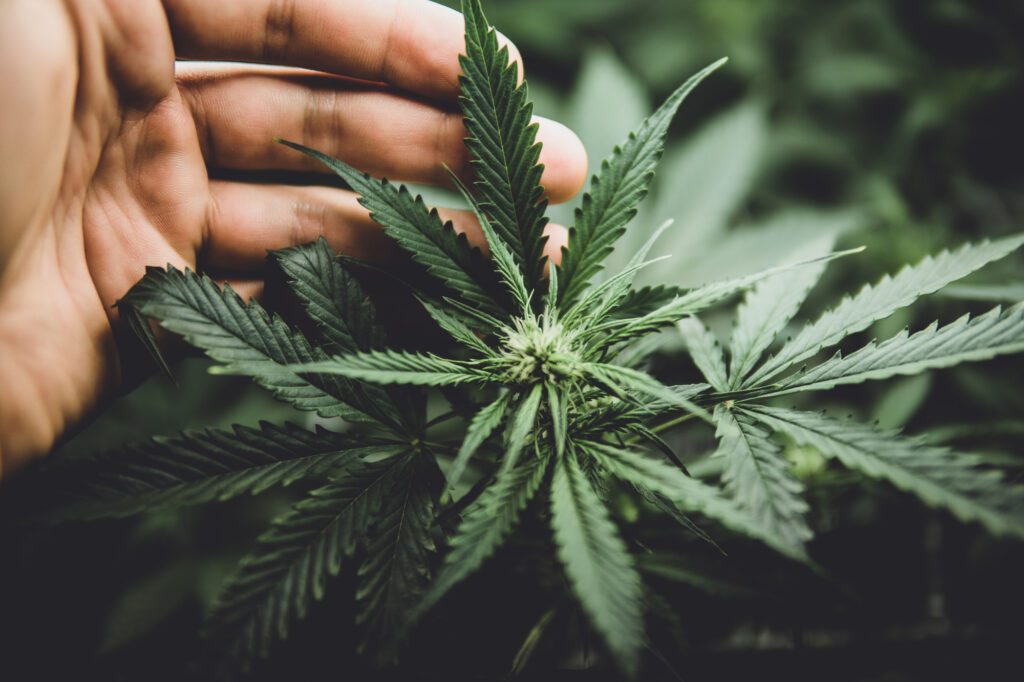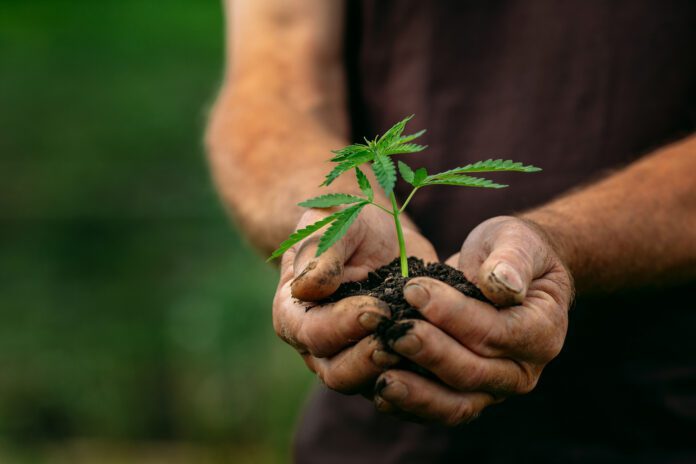Because you’re reading this today, two assumptions must first be discussed. First, you’re reading this from a place where growing, using, and selling cannabis is already legal, either for recreational or medical purposes. This means you won’t have to worry about any legal repercussions by taking the first step of growing your cannabis plants. The second is you have that itching desire to be a cannabis grower yourself.
Growing cannabis is pretty much like growing any other type of plant, except that there could be specific features of cannabis you should pay attention to. Ignoring those leads to some of the common mistakes universally committed both by beginner and seasoned cannabis growers.
To give you a good start on your cannabis growing endeavor, this article lists eight common cannabis mistakes growers make, so you can learn from them and avoid committing the same. So, read on!
1. Watering Too Frequently Or In Large Volumes
Treat your cannabis plants very carefully. Watering them is good, as it does need water for cannabis growth, but only when done in moderation. Too much water can, unfortunately, cause your plants to rot, putting them in that dire situation where they can no longer breathe. The cannabis plant will die very soon if the root consistently goes through that much water-produced stress.
Getting the right balance of watering your plant according to its condition entails observing and paying close attention to your cannabis plant regularly. Its appearance can speak volumes, especially once the leaves start to wilt. Record that timeframe, as that could give you a defined estimate of how often your cannabis plant needs to be watered.
2. Not Understanding The Different Stages Of Cannabis Growth
Cannabis is a plant, so it also has different stages of growth. Beginner growers have to understand what goes on in each of those steps for them to be able to provide the best possible growth that nurtures a healthy plant. There are varying levels of nutrients, light, and water that the cannabis plant will need, so get your thinking shoes on and start studying.
On average, it’ll take around four to eight months to grow a cannabis plant, depending on where you’re growing. If you’ve made a little facility or greenhouse for indoor growing, this timeframe can significantly be sped up, creating flowers in just weeks.
3. Choosing Old Or Low-Quality Seeds
Seed quality matters significantly, too. Old seeds take longer to germinate, if they even germinate at all. When they do, those plants from aged seeds could also have a reduced growth rate. For this reason, it’s crucial to purchase cannabis seeds only from a reputable seed bank or grower. It’ll make a world of difference when you start with a strong foundation coming from healthy, young, and happy cannabis seeds.

4. Failing To Identify The Signs Of Cannabis Plant Stress
Staying on top of the apparent signs of cannabis plant stress can help you become a more proactive grower. This means you can solve and address problems before they escalate into more significant ones. If not, the cannabis plant will continue on its road to death. As a grower, this should be one of your fears.
To help you out, here are some of the telltale signs your cannabis plant might already be stressed out:
- The leaves are curling downwards: This usually happens when the cannabis plant is overwatered. Leaves can sag and limp when the soil’s oxygen is depleted because of overwatering. Moreover, this can also attract pests to feed on the leaves, bringing them to the unhealthy condition they could be in.
To prevent this from happening, growers need to check on the soil moisture levels regularly and then adjust them only as necessary. Those who are planting in pots instead of directly on the soil should also consider using fabric pots, as these promote good drainage.
- The leaves have turned brownish or yellowish: As pictures would show, a healthy cannabis plant is supposed to be vibrant green in color. Be alarmed when it turns brownish or yellowish, as these are apparent signs of a sick plant. This happens when your cannabis plants get too much heat or light, a phenomenon known as heat stress.
Be cautious with your cannabis plants during the flowering stage, as heat stress affects them the most. The heat destroys the most valuable leaves of your plant, leaving you with a distressed and poor-quality cannabis plant.
You can avoid this from happening by carefully monitoring the air quality in the location where your cannabis plants are grown. If it’s in an indoor setting, it’s a good idea to invest in fans to help improve ventilation. More importantly, consider the location of your plants. If they’re located in an area exposed to too much sunlight, consider providing temporary shading or moving them to areas with shade.
- The leaves are dry: In contrast to overwatering, leaves that turn yellow to brown could be your cannabis plant telling you it’s dehydrated. So, remember to water your cannabis plants regularly, especially once the first few signs of drought appear. If the weather is hot or dry, do this early in the morning or evening to reduce evaporation.
These are only a few of the persistent signs of cannabis plant stress. You’ll learn more as you get to know your plant and slowly get the hang of being a good cannabis grower.
5. Practicing Bad Germination
Some cannabis seeds won’t even have the chance to sprout due to lousy germination. This is why cannabis growers must be extra careful when germinating seeds. The following must be observed to give the seeds a chance to sprout:
- Giving it a dark and humid environment;
- Meeting the suitable pH or acidity levels, should you be using rockwool to germinate the plants;
- Observing the ideal germination temperature of 22-25 degrees Celsius;
- Avoid handling or touching the seeds too frequently, as doing so could risk contaminating the seeds, thereby damaging them;
- Achieving good humidity levels of 70-90%.
There are many methods of germinating cannabis seeds; ultimately, the choice depends on you as the grower. What matters most is that you’re able to observe the proper germination practices to give a perfect chance for the seeds to thrive.
6. Not Giving Ample Light
Beginner growers often think the cannabis plant will be alright when given heat and light from a single light bulb. Or that a cannabis plant placed by the windowsill will still grow even with snowy and dark weather outside. However, the light your cannabis plant is getting in those examples isn’t enough.
You must give the cannabis plant adequate light, especially when the plant is growing tall and stretchy, with space between the nodes, as that’s a sign your seedling is reaching for the light. The younger cannabis plants could manage without much light, but plants won’t grow into the flowering stage under low light.
7. Failure To Apply The Proper pH and Electric Conductivity Levels
Along with light and nutrition, the pH or acidity and electric conductivity (EC) levels are also key factors in cultivating healthy cannabis plants. Many growers, however, depend too much on tap water for the plants, given its accessibility and relative cost-effectiveness. This is generally fine, but only when you’ve tested and checked the tap water values to be sure it’s of the correct acidity levels for the cannabis plant.
Here are the recommended pH levels for cannabis plants differ in each phase:
- During Growth: 5.2 to 5.8;
- During the Flowering period: 6.2 to 6.8.
The electric conductivity levels, on the other hand, are as follows:
- During Growth: 0.8 to 1;
- During the Flowering period: 1.2 to 2.
The failure to monitor these values leads to nutritional deficiencies in the cannabis plant when the roots become blocked. Distilled or osmotic water is highly recommended to prevent this, or at least equip yourself with a pH and EC meter.
8. Identifying Pests And Molds Too Late
Unfortunately, many growers still fall victim to pests and molds. They can only identify its presence when it’s too late, and the cannabis plants have already been seriously affected. This means that dark brown spots, thunder bugs, white threads, and spider mites are already recognizable to the naked eye. While you may want to fight those pests naturally, in most cases, using insecticides would now be the only solution. But even then, that’s also not yet guaranteed.
Even if insecticides can be used, this remedy is usually frowned upon, especially for home growers, because of all its health risks. Start by cutting the affected leaves so that the remaining plants and flowers can still have a chance to regrow and survive.

Bottomline: Cannabis Growing Is A Meticulous Craft To Be Learned, But Doable
Many cannabis growers look for the one secret to growing the best cannabis plants. The truth is there’s no single secret to this. Just like growing other plants, getting this right takes time, effort, patience, and even research. It’s a hobby you should be fully committed to if you want the best by-products out of your cannabis plants.
Learn from the mistakes above and be sure yours have the perfect balance of light, good soil nutrition, air, humidity, water, and ideal growing conditions. Most importantly, with cannabis slowly being widely accepted but still highly regulated, always follow your local laws regarding the growing, using, and selling of cannabis.
